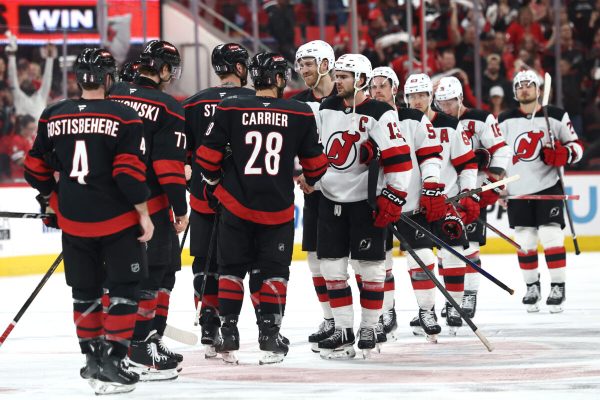OPENING DAY: MLB looking for more exciting game
America’s Past Time Moving to the Future?
Everything you need to know about the MLB rule changes coming in 2023
By Ben Forbes
Whether you are a fan, a player, or simply just around the game, there is no denying that major league baseball games take an astronomical amount of time. But what if there was a way to fix it?
The new addition of the pitch clock is definitely making its impact known this 2023 spring training with the average time of 9-inning games being 2 hours and 39 minutes (compare to a 3-hour flat time in 2022).
Spring training games typically take a shorter amount of time anyway due to the little to no impact they have on the team’s real success.
A pitcher must begin his motion before the expiration of the 15-second timer, or 20 seconds with at least one runner on base. There will also be a 30-second clock for pitchers between batters.
Pitchers will be permitted to step off the rubber twice per plate appearance without penalty, which resets the clock. If the pitcher does this more than twice it will be treated as a balk unless an out is recorded on a runner. Furthermore, the pitch clock resets if the baserunner advances.
Additionally, a hitter must be in the batter’s box with at least eight seconds remaining and they will receive one timeout per plate appearance.
Umpires have the authority to provide additional time if warranted for special circumstances, such as the catcher making the last out of an inning and needing more time to put his gear on. We did not have to wait long to see this take effect. Saturday afternoon was the first walk-off pitch timer violation. In a game against the Red Sox, Atlanta Braves prospect Cal Conley was not in the box and alert to Boston Red Sox pitcher Robert Kwiatkowski and was called out on strikes with the bases loaded, a full count, and in the 9th inning.
During testing in the Minor Leagues, the average time of a nine-inning game was reduced by 25 minutes, from 3:03 to 2:38. Stolen base success rate also increased by 10% during the 2022 season, and stolen base attempts increased from 2.23 attempts per game to 2.81.
A strategy that has proven successful for years is coming to a screeching halt. If you have ever watched an MLB game chances are you have noticed something called a shift. A shift is when the defenses shift themselves into positions-most likely near the same spot- that the batter is statistically most likely to hit it to.
Two infielders must be positioned on each side of second base when the pitch is released, and all four infielders need to have both feet within the outer boundary of the infield when the pitcher is on the rubber. They may not switch sides unless there is a substitution.
The penalty for failure to comply with the shift restrictions is an automatic ball. MLB said the goal of the new shift rules is to encourage more balls in play, give players more opportunities to showcase their athleticism, and offset the trend of alignments featuring four outfielders.
Perhaps the least noticeable rule change of them all is the size of the bases. The MLB is increasing the size of the bases with the hope of improving player safety and encouraging teams to steal more frequently.
The size of first, second, and third base is increasing from the standard 15″ square to an 18″ square.
Throughout testing conducted by MLB, base-related injuries decreased by 13.5% with declines at every level of the Minor Leagues. The base size also reduces the distance between them by 4.5″, making it slightly easier for players to steal a bag, which the league hopes will lead to an increase in stolen base attempts.

Ben is a student-athlete in the class of 2024. This is Ben's second year as a sports reporter for The Oakmonitor. Ben plays baseball and soccer and...












